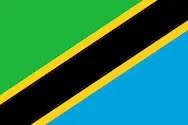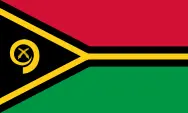Mission and Vision
RIMES aims to provide regional expertise in building end-to-end multi-hazard early warning capacities for enhanced preparedness among target communities and authorities, with an overarching goal to support climate and disaster-resilient development.
Vision:
Forearmed, forewarned, and resilient communities
Mission:
Building climate and disaster risk management capacities for climate and disaster-resilient development
Our goal is to:
- Facilitate establishment and maintenance of core regional observing and monitoring networks to ensure data availability for early warning response.
- Provide earthquake and tsunami services within the framework of the Intergovernmental Oceanographic Commission of the United Nations Educational, Scientific and Cultural Organization (IOC-UNESCO).
- Support National Meteorological and Hydrological Services (NMHSs) for providing localized hydro-meteorological risk information within the framework of the World Meteorological Organization (WMO)
- Enhance warning response capacities at all levels: national to community-level, within each nation’s early warning framework.
Master Plan
RIMES’ Master Plan 2021-2025, sets the direction and priorities of RIMES work over the next five years. It is formulated collectively by the RIMES Council, to build capacities of RIMES Members and the Collaborating States to better manage climate and disaster risks and, thus, contribute to national efforts toward climate- and disaster-resilient development.
The Plan recognizes that NMHS's capacity to produce user-tailored weather and climate information needs to be matched with institutional capacities to translate this information into sectoral impact forecasts to guide advisory generation, and with end-user capacities to access forecasts and warnings, understand and internalize risks, and act to manage risks. Climate service production, availability, delivery, and application is a collaborative venture among the NMHS, intermediary stakeholder institutions in agriculture, water resources, disaster management, and other sectors, and end-users, such as farmers, fishermen, and other communities at risk. Institutional mechanisms that promote NMHS-user dialogue and support climate service application enrich and strengthen such collaboration and facilitate efforts to attain national sustainable development goals.
Building on the 1st and 2nd Master Plans, the RIMES Master Plan 2021-2025 formulated by the 12th RIMES Council (in 2020) presents priority actions identified by Members of the RIMES Council under five priority areas encompassing the pillars of an end-to-end early information value chain:
- Improving data availability
- Modelling and Forecasting
- Transform data into Information: Co-production of Services for Impact based forecasting - DSS
- Tailor-made services to deliver user-specific information for resource and risk management
- Community Outreach: Last mile communication and Forecast Based Action and Feedback
The RIMES Council is responsible for mobilizing resources for Master Plan implementation. Funding shall be a mix of RIMES reserve funds for use as catalytic funds, program funds contributed by the Member States, and donor funds mobilized by the Member States and the RIMES Program Unit. Plan implementation shall also tap technical capacity that is available within the Member States, and engage with user agencies to drive the process of resource mobilization.
The RIMES Council ensures that the RIMES Program Unit shall implement Master Plan priorities in full measure, with ability and experience, by leveraging existing and emerging technologies to:
- Enhance NMHS capacity through continuous engagement to identify products of research and new/emerging technologies, customize these to meet country-specific requirements, pilot-test in a user environment, and refine and transfer to national institutions for integration into operations (RIMES provides technical and, if needed, financial assistance to the Member States until these are fully integrated into the country’s early warning system);
- Enhance the capacity of intermediary stakeholder institutions in integrating new generation probabilistic forecast information in planning and decision-making, for resource management and disaster risk reduction; and
- Engage with countries on a sustained institutional basis, with RIMES being owned and managed by the Member States through hydrometeorological and geophysical agencies until new technology or management practice is fully absorbed into national and local systems, rather than on an ad-hoc donor-based project basis.
Monitoring and evaluation of Master Plan implementation is undertaken by the RIMES Council using a set of performance indicators.















































